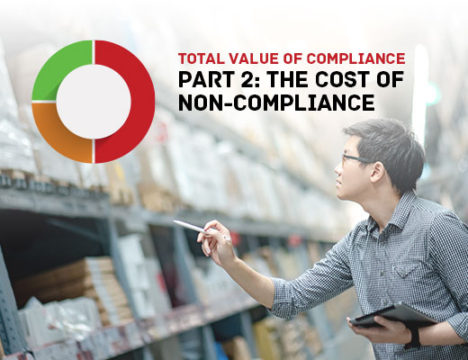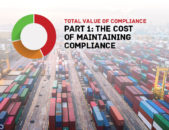Every hazmat pro knows a Dangerous Goods shipment that doesn’t comply with current regulations could end up costing their company money. In fact, 28% of hazmat pros surveyed in our 2018 Global Dangerous Goods Confidence Outlook said their companies comply with regulations only because the regulations mandate it. In other words, all they want to…
Total value of compliance, Part 1: Assessing your hazmat processes and procurement
Trick question: Do you spend too much on Dangerous Goods compliance? Most hazmat professionals would probably answer “yes.” Whenever we have to spend money on something that doesn’t show an immediate benefit, it always feels like we’re spending too much. And there’s no getting around it—Dangerous Goods compliance requires a financial outlay. But the real…
DOT Departments Limit Services During Continued Government Shutdown
Have you been curious how the partial Government shutdown has affected the Department of Transportation (DOT) offices? DOT recently issued a plan document outlining how each office is operating during the current funding freeze. It includes a summary of personnel affected (working vs. furloughed), as well as summaries of continuing operations and suspended activities. Hazardous…
How a free Total Value of Compliance Assessment can make your hazmat operation more profitable
Late last year, we introduced a new concept to the Dangerous Goods galaxy: total value of compliance. It’s a new way of thinking about supply chain operations that views hazmat compliance as not just a cost of doing business, but also as a value-added component that contributes to profitability. Maybe you read that post, and…
Hazmat hopes 2019: Top Dangerous Goods professionals share their wishes
Work in Dangerous Goods long enough, and you may find yourself wishing things were different. Couldn’t that new IATA regulation be worded more clearly? Wouldn’t it be great if you didn’t have to explain Limited Quantities to your customer—for the third time? And how exactly does a 2mm-thick label border make a hazmat shipment safer?…
11 must-have items for hazmat shipping when your eyelashes freeze
Happy New Year! For those of us in northern climes, we’re well past the isn’t-winter-wonderful? phase and well into the enough-already-with-the-freezing-rain phase. Yet Dangerous Goods shipments don’t care if your eyelashes freeze together or your fingertips go numb. Your customers and supply chain partners still expect your shipments to be safe, compliant and on time,…
From hazmat hopes to new paradigms: Our top 12 posts of 2018
If you only have time to read one blog about the Dangerous Goods supply chain, we’re glad you make it ours. And if you don’t even get the time to read our blog every week, here are our top 12 posts from the last year, in chronological order: Hazmat hopes: A 2018 wish list from…
2018: The year in Dangerous Goods regulations
2018 was a relatively quiet year in the Dangerous Goods galaxy, with few major new regulatory changes and no unexpected surprises from domestic or international regulatory bodies. Still, as Labelmaster’s Manager of Regulatory Affairs and Corporate Responsibility, I hear all the questions from our customers and partners about how best to comply with regulations. This…
Total value of compliance, as explained by Chicago Bears fans
Lots of us at Labelmaster are excited about our hometown Chicago Bears, who are poised to make the National Football League playoffs for the first time in eight years. As one of the league’s biggest turnaround stories, the Bears have made sharp improvements in several statistical categories. One improvement that gets very little attention? Penalty…
How CEVA’s Rusty McMains makes the C-Suite pay attention to hazmat
In today’s supply chain, the way people think about Dangerous Goods transport is evolving. It used to be common for organizations to view hazmat compliance as a necessary evil—just a cost of doing business. They cared about safety, and they cared about avoiding delays and civil penalties, but that was the extent of their concern.…









